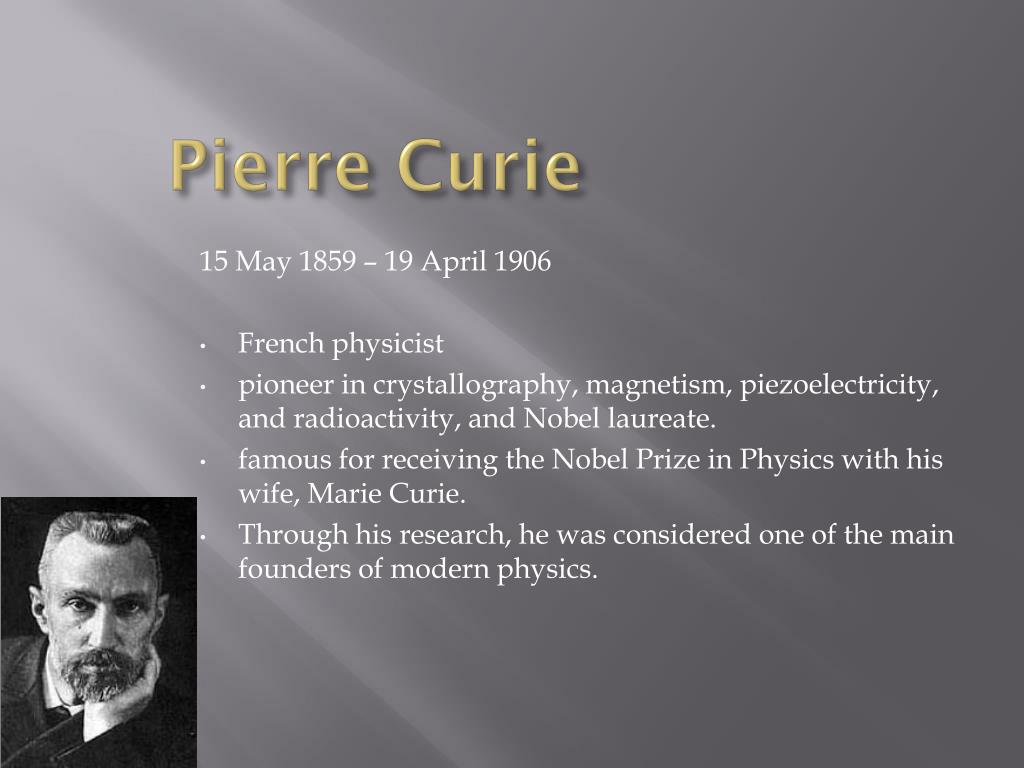
- Who helped discover radium and polonium full#
- Who helped discover radium and polonium portable#
- Who helped discover radium and polonium series#
The goal was to study radioactivity and its applications in physics, chemistry, biology and medicine.
Who helped discover radium and polonium series#
This story is part of an ongoing series exploring famous scientists.12 December 1909: The University of Paris and Institut Pasteur decided to build the Institut du Radium for Marie Curie, winner of the 1903 Nobel Prize for physics along with her husband Pierre Curie and their colleague Henri Becquerel, for their work on radioactivity. This laboratory was set up just a few streets away from the “hangar” at the school of industrial chemistry and physics, where Pierre and Marie Curie discovered radioactivity along with polonium and radium in 1898. Though Marie was often undermined as a woman in a male-dominated field, Pierre backed her every step of the way. In fact, it was Pierre who insisted his wife be equally recognized when awarded the Nobel Prize for their scientific discoveries. The dynamic duo soon became partners in both life and research. Marie and Pierre Curie were introduced by Marie's colleague shortly after she graduated from Sorbonne University. Nothing says true love like a shared passion for science. Here's what the father of modern physics had to say about this remarkable woman: “Marie Curie is, of all celebrated beings, the only one whom fame has not corrupted." 5.
Who helped discover radium and polonium full#
The note not only described how Einstein was inspired by her drive and intellect, but also that she had his full support. It was then that Einstein decided to send a glowing letter to Marie in hopes of uplifting her. As a grieving widow, Marie faced the brutal sexism that accompanied her fame as a solo female scientist.

Who would think that Albert Einstein be part of the fun facts about Marie Curie? In 1906, Pierre was killed in a tragic road accident. Albert Einstein Was a Huge Marie Curie Fan

Following the family tradition, the youngest Curie married a Nobel Peace Prize winner, Henry Richardson Labouisse, who received the award as the head of UNICEF in 1965. In 1935, daughter Irène Joliot-Curie followed in her parents' footsteps and received a Nobel alongside her husband, Frederic Joliot, for their discovery of new radioactive isotopes. Marie held the most, with two to her name, while her husband, Pierre, held one. Winning Nobel Prizes was a family affair: The Curie family had a total of five total Nobel Prizes. Over a million soldiers benefited from the “Petites Curies," Marie's invention that came with a generator, a hospital bed, an X-ray and the ability to save a life.
Who helped discover radium and polonium portable#
The portable technology allowed them to X-ray the wounded soldiers and helped guide their surgeries. She Was a World War I HeroĬurie helped save thousands of soldiers by developing mobile radiology units that were delivered to the front lines for army doctors to use. Turns out Team Curie opted to work out of an old shed for much of their Nobel prize-winning research. When Marie and her husband sought to conduct a series of experiments that would prove the existence of the elements radium and polonium, they needed plenty of space - a traditional laboratory just didn't make the cut. Marie Curie may have broken barriers in science, but her lab was far from glamorous.

When you think of a Nobel Prize-winning physicist, you can only imagine how legit their workspace must be.

Here are five fun facts about Marie Curie, a radiant woman who paved the way for women in science : 1. What Are Some Interesting Facts About Marie Curie? Today, Marie Curie's discoveries on the properties of radioactive elements have paved the way for diagnosis and radiation therapy in medicine. In 1911, she became the sole recipient of the Nobel Prize for chemistry for her work on pure radium. Even though Marie became the first woman to receive a Nobel Prize, she didn't stop there. The term radioactivity was coined by Marie herself and garnered the world's attention.įor their groundbreaking work, the pair received the Nobel Prize in physics in 1903. They shared a love for science and research, which led to their ground-breaking discovery of radioactivity - the spontaneous emission of energetic particles or waves via unstable atomic nuclei. Soon after, she met her husband and science partner, Pierre Curie. There she discovered two radioactive elements: radium and polonium. In 1891, her French came in handy as the young scientist headed for Paris to further her education at Sorbonne University, where she studied chemistry, maths and physics.


 0 kommentar(er)
0 kommentar(er)
